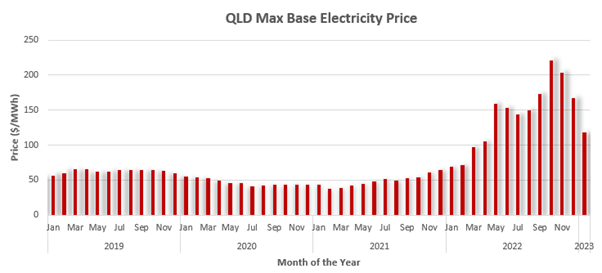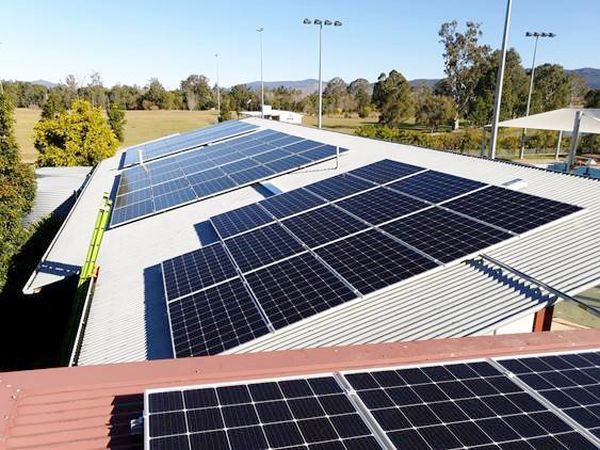Transitioning from traditional to renewable energy supply
| Back to Newsletter |
Written by Mike Fideli, Energy Consultant
The recent international energy shortages due to supply chain disruptions, actioned and planned retirement of several coal-fired power plants, inflation and the general cost of living increases have caused the overall electricity price to significantly increase over the last few months and are forecasted to continue to rise by approximately 35% in 2023/24 according to the Financial Review.1
Katja Ignatieva, Scientia Associate Professor at UNSW Business School, whose research focuses on the dynamics and volatilities of the energy markets, explains why wholesale prices are increasing and the result will unsurprisingly be passed onto businesses and households.
“Businesses and households will inevitably face an increase in energy prices,” said Associate Profession Ignatieva said2.
“It’s an increase driven by multiple factors including rising gas and coal prices; reduction of thermal power generation due to unplanned outages at multiple generators and increasing generation cost.”
As an example, in October 2021, the maximum base electricity price in Queensland was $54.5/MWh, compared to October 2022 where the maximum base electricity price was $221.18/MWh. The graph below shows the base maximum monthly electricity price in Queensland since January 2019.

QLD Base Electricity Price trend from ASX Energy data. Source: https://www.asxenergy.com.au/
Electricity is one of the largest expenditures for organisations across the country. According to LG Sherlock the collective annual spend of Queensland Councils alone is estimated to be around $250 million (https://sherlock.lgaq.asn.au/electricity.html), so reducing energy costs would free up some financial resources that could be reinvested into other programs or projects to benefit ratepayers.
What’s the alternative?
We are currently in the transition phase between moving from traditional energy sources (coal, oil, gas) to renewable energy options like solar, hydro and battery. Associate Professor Ignatieva explains “[the] transition stage of increasing energy prices is likely to continue until there is sufficient hydropower development and battery storage that meet government targets.” But organisations, particularly councils across Queensland with sites suitable for solar installation, have an opportunity to safeguard against the rising costs of traditional power. And, with existing high energy prices, the payback period is reduced so a positive return on investment is achieved more quickly.
 We’ve been working with Somerset Regional Council over the past 4 years to reduce their operating expenses and improve their environmental footprint through energy feasibility studies resulting in the installation of solar power plants across several council owned sites. Read more about the Somerset Solar Concepot Design Case Study.
We’ve been working with Somerset Regional Council over the past 4 years to reduce their operating expenses and improve their environmental footprint through energy feasibility studies resulting in the installation of solar power plants across several council owned sites. Read more about the Somerset Solar Concepot Design Case Study.
Now is the time for all organisations to be focussing on ways to reduce overall costs, lowering our impact on the environment and working towards to the Queensland government’s emissions reduction targets of 70% renewable energy by 20323.
The first step
The first step is to conduct a Renewable Energy Feasibility Study by engaging an Energy Advisor to conduct a detailed analysis of the available renewable energy resources within an organisation by ascertaining site-specific energy consumption and analysing the condition of the existing electrical and structural infrastructure or land conditions. This study identifies the most suitable renewable energy options and provides solutions to reducing overall energy costs, lowering environmental impact, creating a sustainable future and providing the best return on investment.
The overall outcome of conducting a renewable energy feasibility study is important for informing/forecasting budgets and also positions organisations and businesses to take advantage of any grant funding opportunities that may be available. With likely funding on the table from stimulus measures taken by the state and federal governments over the coming months, this is an ideal time to be planning and positioning your organisation for success in securing these funds.
Since 2016, we have conducted renewable energy feasibility studies on more than 320 sites from over 33 councils. The solar renewable energy feasibility studies across all 320 sites have an estimated electricity cost savings of over $4.3 million per annum.
Further Reading
Alice Springs Case Study Somerset Case Study
1 Australian Financial Review https://www.afr.com/companies/energy/electricity-prices-tipped-to-rise-at-least-35pc-in-2023-20221010-p5boif accessed 7 Feburary 2023
2 University of New South Wales, News Room, 'Energy Crisis - why are electricity prices set to rise?' https://newsroom.unsw.edu.au/news/business-law/energy-crisis-why-are-electricity-prices-set-rise accessed 7 February 2023
3 Queensland Government, Department of Energy and Public Works, https://www.epw.qld.gov.au/energyandjobsplan/about access 7 February 2023